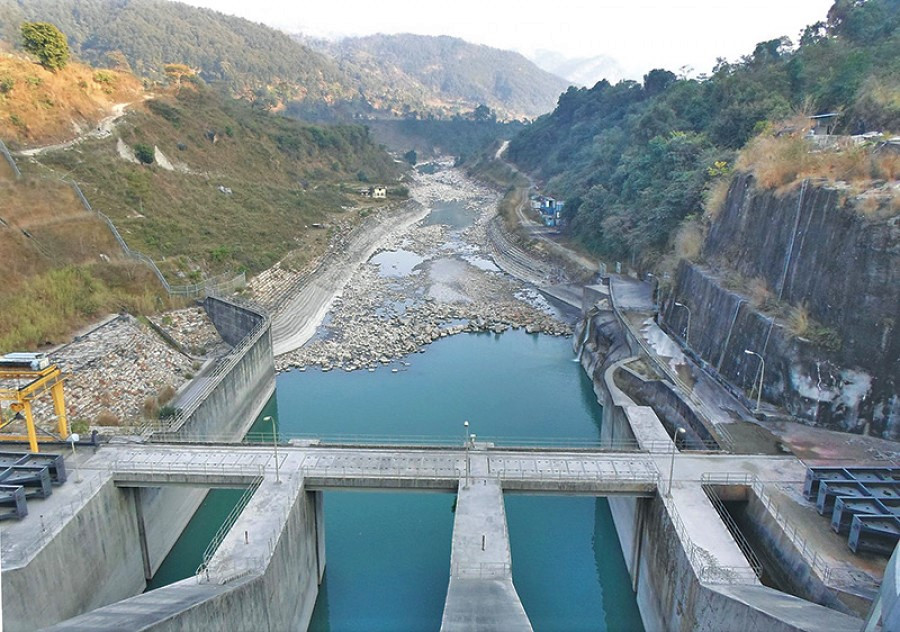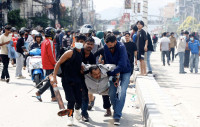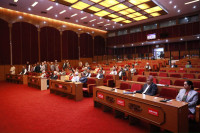Columns
Sharing energy benefits
The political economy of Nepal’s energy sector must be realigned to ensure benefit for all Nepalis.
Bishal Thapa
Nepal’s energy sector has vastly improved from just a few years ago. The Nepal Electricity Authority (NEA), the country’s monopoly electric utility, is highly profitable after decades of persistent losses. Approximately 90 percent of the people now have access to electricity. There is an abundant supply of electricity, at least for some months, and the challenge now is to discover new sources of demand that can absorb all that Nepal’s power capacity can generate.
At the same time, energy remains one of Nepal’s core underlying development challenges. Traditional biomass still accounts for approximately two-thirds of the country’s total energy use. Energy imports, predominantly oil, remain a huge drain on foreign exchange, representing approximately 17 percent of total imports. There is an increased reliance on India as the off-taker for electricity, to the point where the future growth of Nepal’s power sector is locked into the political dynamics between Nepal and India.
The energy supply in rural areas is poor and unreliable. Investments in the sector still requires the generosity of foreign countries. A reliable and high quality power supply—the prerequisite to spurring investment and unlocking economic growth—is still lacking.
Why is Nepal’s energy sector still failing to drive investments, growth, livelihood, and prosperity, despite all the gains? In this article, I explore these questions through the lens of the sector’s political economy: the singular focus on hydropower generation capacity that has paralysed everything else.
Singular focus on hydropower
The failure to diversify beyond hydropower is hurting our prospects for growth and opportunity. While improved electricity supply and access benefit everyone, the process of building new hydro plants is not.
A study conducted by the National Bureau of Asian Research, based on a survey of 19 hydro plants, found that projects contributed on average to 20km of new roads, employing between a hundred and thousand people on average. Moreover, it supported the development of local infrastructure such as schools, health facilities and other social services. Undoubtedly, hydropower plants can add to economic activity and infrastructure improvements locally in the area where they are located. But that has not meant that such benefits which occur during the process of building hydro plants have been in addition to, or accelerated, what would have been done anyway.
Ensuring that people benefit from hydropower plant development is a policy goal. In 2000, for instance, a policy for royalty sharing between the central, district and local governments was implemented. It has since been revised in line with the federal structure. Provinces and local governments now share 50 percent of the royalty, while the federal government retains the other half. Though well intended, attempts to share the royalties haven’t been extremely successful. Those efforts could be “compounding inequality in the country instead of tackling it,” a research report by the International Water Management Institute (IWMI) concluded.
Efforts to explore better options for sharing the royalties from hydropower development continue to be explored. Between 2015 and 2017, for example, Niti Foundation, Social Science Baha, and the International Centre for Integrated Mountain Development (ICIMOD) conducted several studies and workshops to examine possible improvements to the model for sharing the benefits of hydropower projects with local communities fairly and equitably.
Nepal’s quest to find fair and equitable methods to distribute the profits of hydropower development must, no doubt, continue. But having the country benefit from hydropower development isn’t just about distributing profits, royalties or the few jobs created during construction. They are also about inducing broader system-wide impacts that result in higher investments and growth.
The large hydropower potential has intoxicated Nepal into chasing one singular idea around developing hydropower generation with devastating impacts on everything else.
Wrong metrics to measure progress
The singular focus on developing hydropower generation means that progress is headlined and, more importantly, measured by the generating capacity, or megawatts, that is built. One government sets a goal for 5,000 megawatts, another 10,000 megawatts, and so on. Every day there is an angst that we are not developing more MWs. Every investment forum concludes with billions of dollars committed to new hydro plants.
The singular focus on measuring hydropower generation capacity has undermined the focus on broader sector reforms, such as distribution, transmission, demand, and sector governance. It has stalled the opportunity for expanding and integrating distributed energy resources, such as solar, wind and electric storage within the energy mix. It has distracted Nepal from the value of early innovations on community ownership of distributed energy resources and electric public transport (e.g., safa tempos). Like the towering pine tree that blocks sunlight, sucks up groundwater, and kills everything underneath, it has failed to let anything else grow around it.
Nepal is rich in water resources before it is rich in hydropower potential. Yet the country’s singular focus on hydropower generation capacity has marginalised efforts to exploit water resources. The government’s Irrigation Master Plan 2019, for instance, recognises that only 40 percent of the agricultural area is cultivated. The plan notes that Nepal has “considerable potential for improvement and expansion” with “ample water resources” and tremendous potential to increase the income of 70 percent of Nepalis employed in agriculture.
The situation with drinking water is even worse. Under the 2020 Voluntary National Review of the Sustainable Development Goals (SDG), Nepal still faced “challenges in providing safe drinking water, as only 25 percent of the population currently has access to safe sources.”
Nepal has been plagued by inadequate investments in distribution infrastructure. The rush to tap Nepal’s large hydropower potential has meant that investments have largely chased generation projects. Data on the investment spread across generation, transmission and distribution isn’t readily available. As a proxy, consider investments by development partners in the power sector. The Asian Development Bank (ADB), for example, didn’t make its first investment in the distribution segment until 2018, when it approved the transmission and distribution energy efficiency enhancement project. Among the multilateral development partner, ADB has been the largest investor in the power sector.
The absence of investments in distribution infrastructure has damaged Nepal’s competitiveness and economic prospect. This has been felt perhaps most acutely in agriculture, where poor distribution networks have kept the electricity supply unreliable. Over the years, the lack of reliable and quality power in agricultural feeder lines has locked agriculture into the continued use of traditional methods. Farmers don’t invest in electric pump sets, agricultural mills, or cold storage if there isn’t enough reliable and quality power to run that equipment. Agricultural productivity has, thus, fallen sharply. The net result is that Nepal’s food imports have increased approximately 80 times since 2001 to $1 billion annually which represents a new source of vulnerability for the country.
Nepal must remove its blinders and soak in a broader view of energy beyond hydropower generation. Diversified and modern energy systems are now better positioned to address the aspirations of the people of Nepal.




 11.74°C Kathmandu
11.74°C Kathmandu















